A pipeline plays a crucial role in mining operations by transporting waste slurry from processing plants to tailings storage facilities. These pipelines are essential for the safe and efficient disposal of tailings, which consist of a mixture of water, fine-grained rock, and processing chemicals. However, due to their exposure to extreme environmental conditions, including high temperatures, salinity, and abrasive slurry compositions, these pipelines are highly susceptible to wear and corrosion. Without proper tailings pipeline design, these challenges can lead to operational inefficiencies, increased costs, and environmental hazards. Proper pipeline design and material selection also contribute to environmental protection by minimizing the risk of pollutants entering the ecosystem.
Corrosion occurs when the pipeline material degrades due to chemical, electrochemical, or mechanical interactions with its environment. This deterioration weakens the structure, leading to leaks, ruptures, and reduced pipeline lifespan. HDPE tailings pipes are engineered to resist break under high pressures and mechanical stress, ensuring greater safety. The highly abrasive nature of the slurry, combined with variations in pH levels, accelerates corrosion, making maintenance and prevention strategies a top priority for mining companies. Implementing effective tailings pipeline design strategies, including selecting durable materials like HDPE tailings pipe, is essential to mitigate these risks and enhance operational efficiency.
Selecting the right material is critical for ensuring pipeline longevity and performance. HDPE tailings pipes are known for their long service life compared to traditional materials like concrete and steel. HDPE is preferred over concrete and steel due to its superior corrosion resistance and durability. This makes HDPE an ideal choice for demanding mining environments where wear, corrosion, and mechanical stress are significant concerns.
The Impact of Corrosion on Tailings Pipelines
Corrosion in a tailings pipeline can have severe consequences, significantly affecting operational reliability and increasing costs. The primary impacts include:
- Shortened Lifespan: Corrosion rapidly weakens pipeline materials, requiring frequent replacements, leading to higher capital and maintenance costs. Investing in durable materials, such as HDPE tailings pipes, can help extend pipeline longevity and reduce these expenses.
- Environmental and Regulatory Risks: Pipeline failures due to corrosion can result in leaks, contaminating nearby water sources and ecosystems. Uncontrolled discharge of tailings poses a risk to both water and soil quality. This can lead to hefty regulatory fines and potential shutdowns, affecting the sustainability of mining operations. If not properly contained, pollutants can also migrate into the surrounding soil, further increasing environmental impact.
- Production Disruptions: A failing tailings pipeline can cause operational delays, which can impact overall productivity and profitability. The need for unplanned repairs and downtime can also significantly disrupt mining efficiency.
Tailings storage facilities are designed to safely store tailings and prevent accidental discharge, minimizing environmental risks and ensuring compliance with regulations.
Given these challenges, implementing corrosion prevention techniques is critical for ensuring long-term sustainability and cost-effectiveness in tailings pipeline operations. By integrating robust tailings pipeline design methods, selecting corrosion-resistant materials, and adopting proactive maintenance strategies, mining companies can significantly reduce corrosion-related risks and enhance overall pipeline performance.
Tailings Management Overview
Tailings management is a vital aspect of modern mining operations, focusing on the safe handling, storage, and disposal of waste materials generated during mineral extraction processes. After valuable minerals are separated from the uneconomic fraction of ore, the remaining materials—known as tailings—must be managed to minimize environmental impact and ensure operational efficiency. These tailings, often in the form of a slurry, can contain fine particles, water, and residual chemicals, making their proper disposal a significant challenge.
Effective tailings management relies on robust infrastructure, including the use of HDPE pipes and pipelines, which are engineered to transport tailings slurry from the processing plant to tailings storage facilities (TSFs) or designated disposal sites. HDPE pipes are favored for their exceptional durability, resistance to corrosion, and ability to withstand severe wear, even in the harsh conditions typical of mining environments. By utilizing these advanced materials, mining operations can reduce the risk of leaks, contamination, and environmental damage.
The overarching goal of tailings management is to ensure that materials left after mineral extraction are stored or disposed of in a way that protects the environment and supports the long-term sustainability of mining activities. This involves careful planning, the use of engineered pipelines, and ongoing monitoring to address the challenges posed by tailings and their potential impact on surrounding ecosystems.
Tailings Transport
Transporting tailings slurry efficiently and safely is a cornerstone of effective tailings management. The process involves moving large volumes of abrasive and sometimes chemically aggressive slurry over long distances from the processing plant to tailings storage facilities or disposal areas. To achieve this, mining operations require pipelines that are not only durable but also highly resistant to both abrasion and corrosion.
HDPE pipes have become the industry standard for tailings transport due to their superior resistance to severe wear and chemical attack. Unlike steel pipes, which are prone to corrosion and rapid degradation when exposed to tailings slurry, HDPE pipes maintain their integrity over time, significantly reducing the risk of leakage and environmental contamination. The use of heat fusion techniques to join HDPE pipes ensures strong, leak-free joints, further enhancing the safety and reliability of the pipeline system.
Tailings pipelines must be carefully engineered and constructed to handle the high pressures and flow rates associated with tailings transport. This includes selecting materials that can withstand the constant movement of abrasive solids and designing the pipeline layout to minimize areas of excessive wear. By prioritizing the use of HDPE pipes and advanced construction methods, mining operations can ensure the safe, efficient, and environmentally responsible transport of tailings.
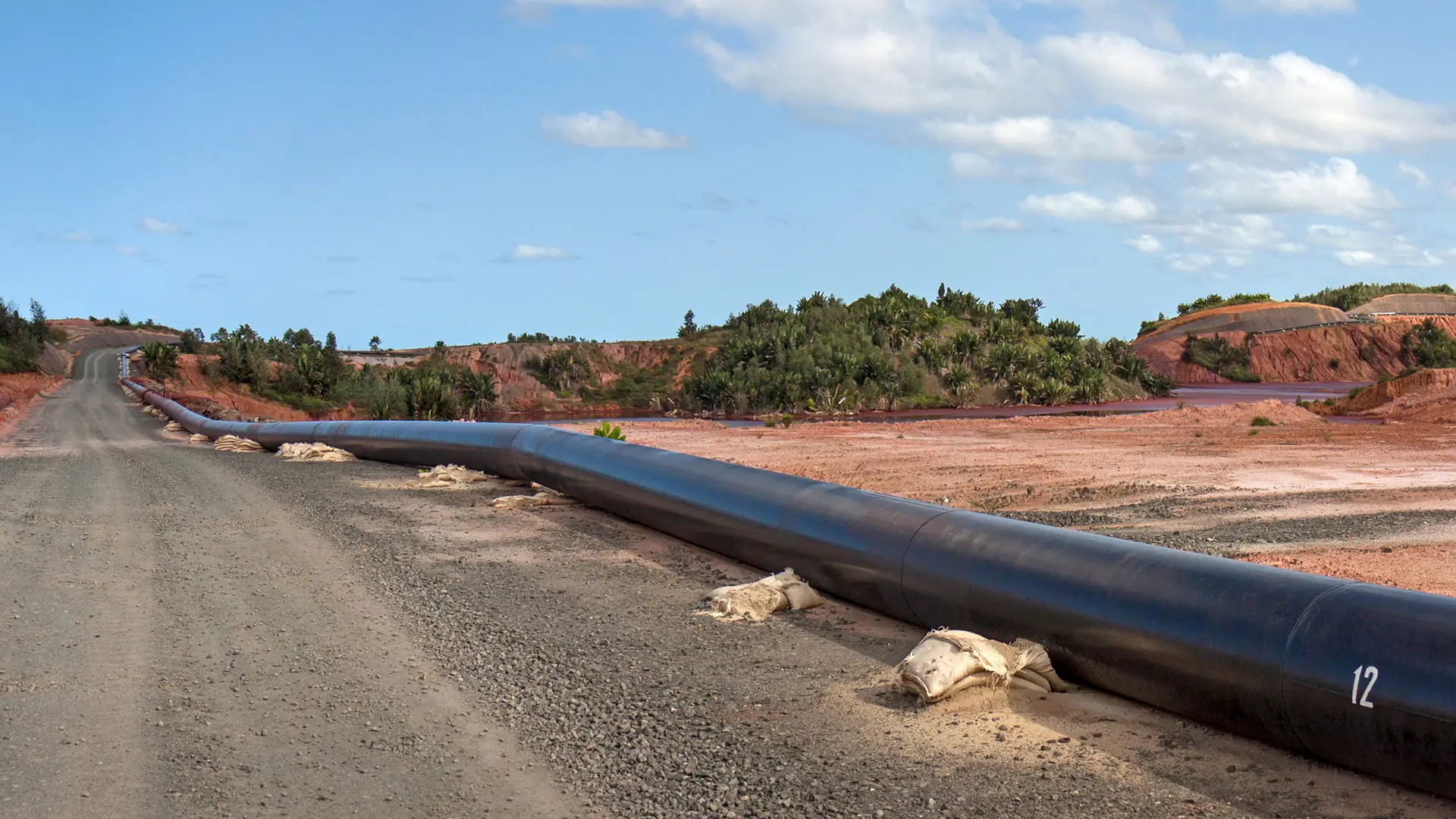
Understanding Corrosion in Tailings Pipelines
A. What is Corrosion?
Corrosion is a natural process that causes materials, particularly metals, to deteriorate due to chemical and electrochemical reactions with their environment. In mining operations, pipeline design plays a crucial role in mitigating corrosion risks by ensuring that pipelines can withstand the harsh conditions associated with transporting tailings.
Corrosion in a pipeline occurs when the material comes into contact with water, oxygen, or the chemical composition of the transported slurry. Over time, these interactions weaken the structure, causing thinning walls, leaks, and, in severe cases, complete system failure. To minimize these risks, effective pipeline design must account for factors such as material selection, protective coatings, and optimized flow rates.
One of the most effective solutions for corrosion resistance is using HDPE tailings pipe. Unlike metal pipes, HDPE tailings pipe does not corrode when exposed to water, chemicals, or oxygen, making it a durable and low-maintenance option for transporting tailings in harsh mining environments.
B. Types of Corrosion Affecting Tailings Pipelines
Several types of corrosion can impact the integrity of a pipeline:
- Uniform Corrosion – A gradual and consistent material loss across the pipeline surface due to prolonged exposure to corrosive conditions.
- Pitting Corrosion – A localized form of corrosion that creates small holes or pits in the pipeline material, leading to weak points and potential perforation.
- Galvanic Corrosion – Occurs when two dissimilar metals come into contact in the presence of an electrolyte, leading to the accelerated corrosion of the less noble metal.
- Erosion-Corrosion – A combination of mechanical wear and chemical attack, commonly found in pipelines transporting highly abrasive tailings slurry.
- Crevice Corrosion – Occurs in stagnant areas such as gaskets, welds, and joints, where trapped moisture and chemicals promote localized corrosion.
- Microbiologically Influenced Corrosion (MIC) – Caused by bacteria that generate acidic byproducts, leading to localized corrosion damage and material degradation.
Implementing a well-planned tailings pipeline design that includes corrosion-resistant materials, coatings, and maintenance strategies is essential to preventing these forms of corrosion.
C. Key Factors Contributing to Corrosion in Tailings Pipelines
Several environmental and operational factors accelerate the corrosion process in pipelines used for tailings transport:
- Abrasive Nature of Tailings Slurry – The high solid content in tailings causes mechanical wear, leading to faster material degradation. The use of HDPE tailings pipe helps minimize abrasion-related damage due to its smooth internal surface, which reduces wear.
- Acidic or Alkaline pH Conditions—Residual process chemicals can create highly acidic or alkaline environments, increasing corrosion rates. To reduce the impact of chemical exposure, an optimized tailings pipeline design should incorporate pH control strategies.
- Presence of Oxygen and Moisture—Exposure to oxygen and water leads to oxidation, which is a leading cause of rust and material weakening in metal pipelines.
- Temperature Extremes – Large temperature fluctuations cause thermal expansion and contraction, which can induce stress and accelerate material fatigue.
- Flow Velocity and Turbulence – High flow speeds, especially in bends and joints, increase erosion-corrosion risks, leading to premature wear and potential leaks.
By integrating robust tailings pipeline design strategies, mining operations can significantly reduce corrosion-related failures, extend the service life of their pipelines, and lower long-term maintenance costs. Controlled operating conditions, such as maintaining optimal density, temperature, and flow rates, are essential to minimize corrosion risks and ensure safe, effective tailings disposal.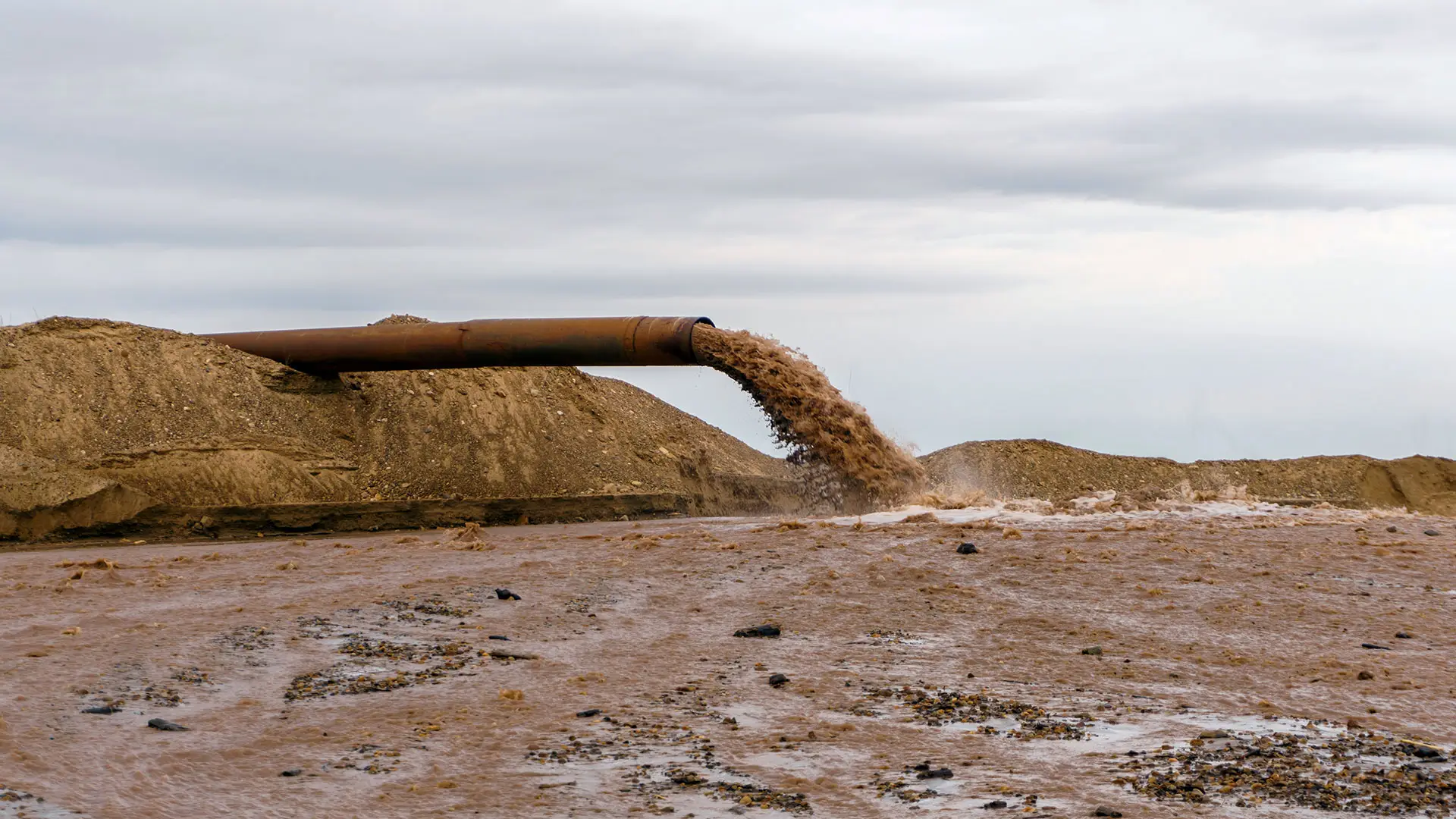
A. Material Selection for Corrosion Resistance
Selecting the right pipeline material is the first and most crucial step in preventing corrosion in a tailings pipeline. In mining operations, pipeline design plays a crucial role, as pipelines are used in various types of mines—including gold, copper, nickel, coal, phosphate rock, bauxite, and uranium mines—to transport tailings to storage facilities. Different materials offer varying levels of durability and resistance to chemical, mechanical, and environmental damage. Common options include:
- HDPE (High-Density Polyethylene) – Non-corrosive and flexible, making it a preferred choice for modern tailings pipeline design. However, HDPE tailings pipes can be vulnerable to mechanical wear in highly abrasive environments.
- Stainless Steel – Provides excellent resistance to chemical corrosion but is costly, making it less viable for extensive pipeline networks.
- High-Alloy Steels – Duplex stainless steels offer enhanced durability, particularly in acidic tailings environments, making them an excellent option for long-term reliability.
- Rubber-lined and Ceramic-Lined Pipes – Designed to withstand extreme abrasion and chemical attack, significantly extending pipeline service life.
Choosing the right material depends on the chemical composition of the tailings slurry, environmental factors, and the specific operational requirements of the tailings pipeline. Pipelines often deliver tailings to tailings dams, which require materials with high corrosion resistance to ensure safety and environmental protection.
B. Protective Coatings and Linings
Applying protective coatings and linings is another effective method of preventing corrosion. These create a barrier between the pipeline material and corrosive elements in the transported slurry. Pipelines used in copper and oil mining operations often require specialized coatings to handle the unique chemical challenges presented by copper ores and oil sands tailings. Common options include:
- Epoxy-Based Coatings – Provide excellent resistance to moisture and chemical attack.
- Polyurethane Coatings – Offer flexibility and impact resistance, making them ideal for areas subject to mechanical stress.
- Fusion-Bonded Coatings – Suitable for high-temperature applications, offering a strong protective layer.
- Rubber and Ceramic Linings – Widely used in high-wear areas due to their superior abrasion resistance.
Integrating these protective measures into tailings pipeline design helps to reduce material degradation and extend pipeline longevity.
C. Cathodic Protection Systems
Cathodic protection (CP) is an electrochemical technique that prevents corrosion by altering the electrical charge of the pipeline. There are two primary types of CP:
- Sacrificial Anode Systems – Utilizes metals such as zinc, magnesium, or aluminum, which corrode instead of the pipeline material.
- Impressed Current Cathodic Protection (ICCP) Systems – Uses an external power source to apply a protective current, preventing corrosion in submerged or underground pipelines.
Cathodic protection is particularly beneficial for metal pipelines exposed to high-corrosion environments, offering a long-term solution for corrosion mitigation. In some cases, cement-based linings are used together with cathodic protection to further enhance pipeline durability and stability.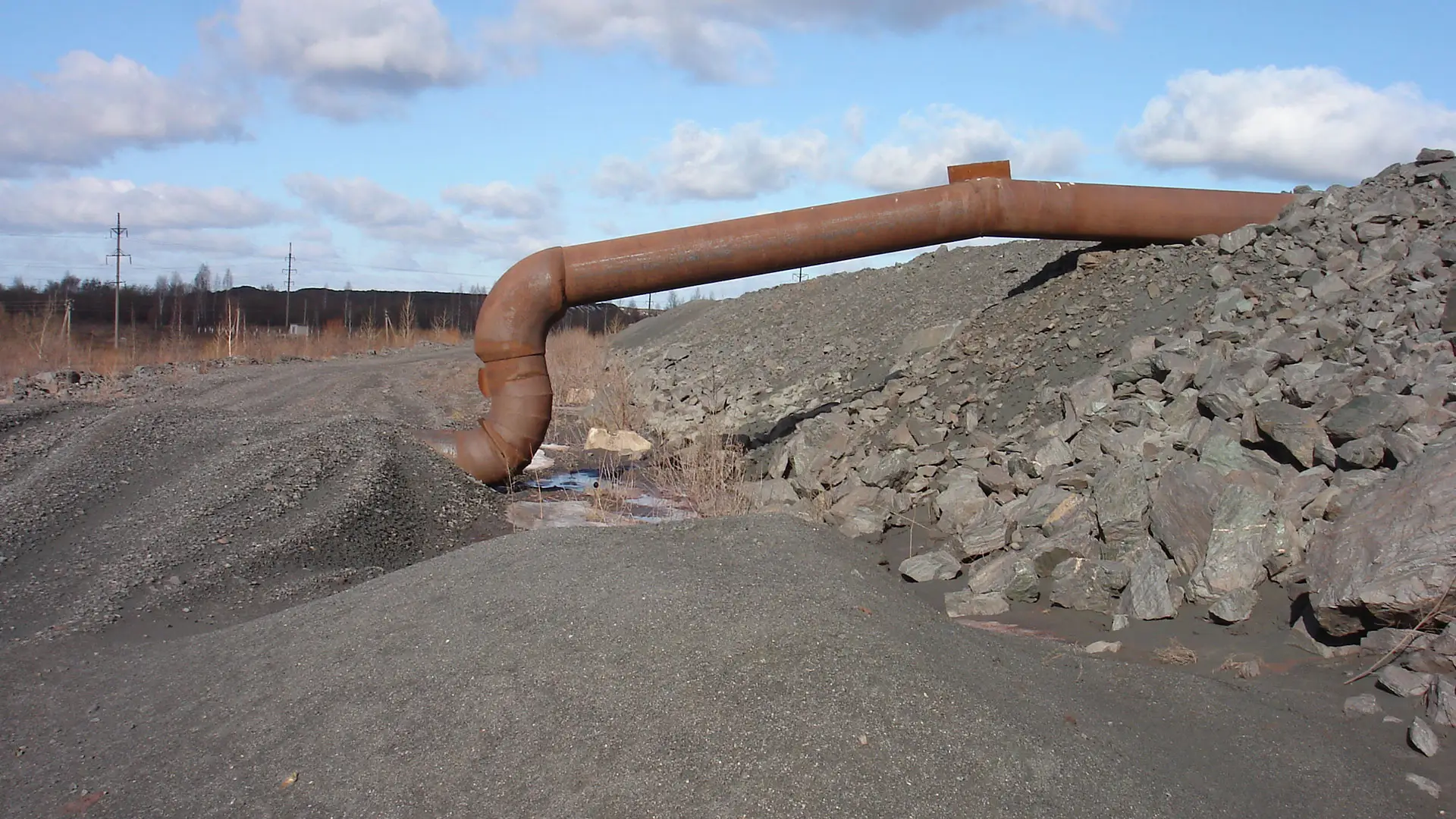
D. Proper Pipeline Design and Installation
A well-optimized tailings pipeline design can significantly reduce corrosion risks. Key strategies include:
- Optimizing Routing – Avoiding areas with high mechanical wear or exposure to corrosive elements.
- Increasing Wall Thickness – Using thicker-walled pipes in high-impact sections to prolong service life.
- Joint and Fitting Protection – Employing corrosion-resistant welding techniques and lined fittings to prevent crevice corrosion.
By carefully planning the installation of the tailings pipeline, mining operations can mitigate the risks associated with corrosion and enhance its overall efficiency.
E. Routine Monitoring and Maintenance Strategies
Regular monitoring and maintenance play a crucial role in preventing costly pipeline failures. Key strategies include:
- Ultrasonic Thickness Measurements – Detects early signs of pipeline thinning due to corrosion.
- Smart Pigging and Inline Inspection Tools – Identifies weak points and areas vulnerable to corrosion.
- Corrosion Sensors and Real-Time Monitoring – Provides continuous data on pipeline conditions, enabling predictive maintenance.
- Cleaning and Flushing Procedures – Removes accumulated deposits that can accelerate corrosion and impact flow efficiency.
Routine maintenance ensures early detection of corrosion issues, reducing the likelihood of unexpected failures.
F. Environmental and Chemical Controls
Managing the chemical properties of the tailings slurry is another effective method of preventing corrosion. Proper tailings disposal methods, including the use of tailings ponds, are essential for minimizing environmental risks associated with mine waste. Techniques include:
- pH Adjustment – Neutralizing excessively acidic or alkaline tailings to reduce their corrosive effects.
- Use of Corrosion Inhibitors – Adding chemical compounds that slow down corrosion reactions.
- Flow Rate Optimization – Preventing excessive turbulence and stagnation to minimize erosion-corrosion risks.
Mining operations can significantly enhance the durability and performance of their pipeline infrastructure by integrating these strategies and utilizing durable materials such as HDPE tailings pipe.
Best Practices for Tailings Pipelines
Implementing best practices in the design, construction, and maintenance of tailings pipelines is essential for minimizing risks and ensuring long-term performance. The use of HDPE pipes is widely recognized as a best practice due to their outstanding durability and resistance to corrosion, especially when compared to other materials commonly used in pipeline construction.
When designing tailings pipelines, it is crucial to account for the unique properties of tailings slurry, such as its high solids content and abrasive nature. This means selecting pipe materials and wall thicknesses that can withstand continuous exposure to harsh conditions. Regular maintenance and inspection routines are also vital to detect early signs of wear, leakage, or contamination, allowing for timely repairs and preventing costly failures.
Advanced technologies, such as automated monitoring systems and real-time data collection, can further optimize pipeline operations by providing early warnings of potential issues. Additionally, proper closure and reclamation of pipelines at the end of their service life are critical steps to prevent environmental contamination and ensure public safety. By adhering to these best practices, mining companies can maximize the safety, durability, and efficiency of their tailings pipelines, while minimizing their environmental footprint.
Risks and Challenges in Tailings Management
Tailings management presents a range of risks and challenges that must be addressed to protect the environment and ensure the sustainability of mining operations. One of the primary concerns is the potential for environmental contamination due to leakage, seepage, or failure of pipelines and storage facilities. The use of inadequate materials, such as steel pipes, can exacerbate these risks, as they are more susceptible to corrosion and severe wear, leading to pipeline breaches and the release of tailings solids into the environment.
Other significant challenges include the safe disposal of tailings solids, the management of tailings ponds to prevent overflow or dam failure, and the mitigation of acid mine drainage, which can result from the oxidation of sulfide minerals in tailings. The mining industry must adopt comprehensive risk management strategies, including the use of HDPE pipes for their superior resistance to corrosion and wear, regular maintenance and inspection of pipelines, and the deployment of advanced monitoring and automation systems.
By prioritizing proactive tailings management and leveraging modern technologies, mining operations can significantly reduce the risk of environmental impact, ensure compliance with regulatory standards, and support the long-term sustainability of the industry.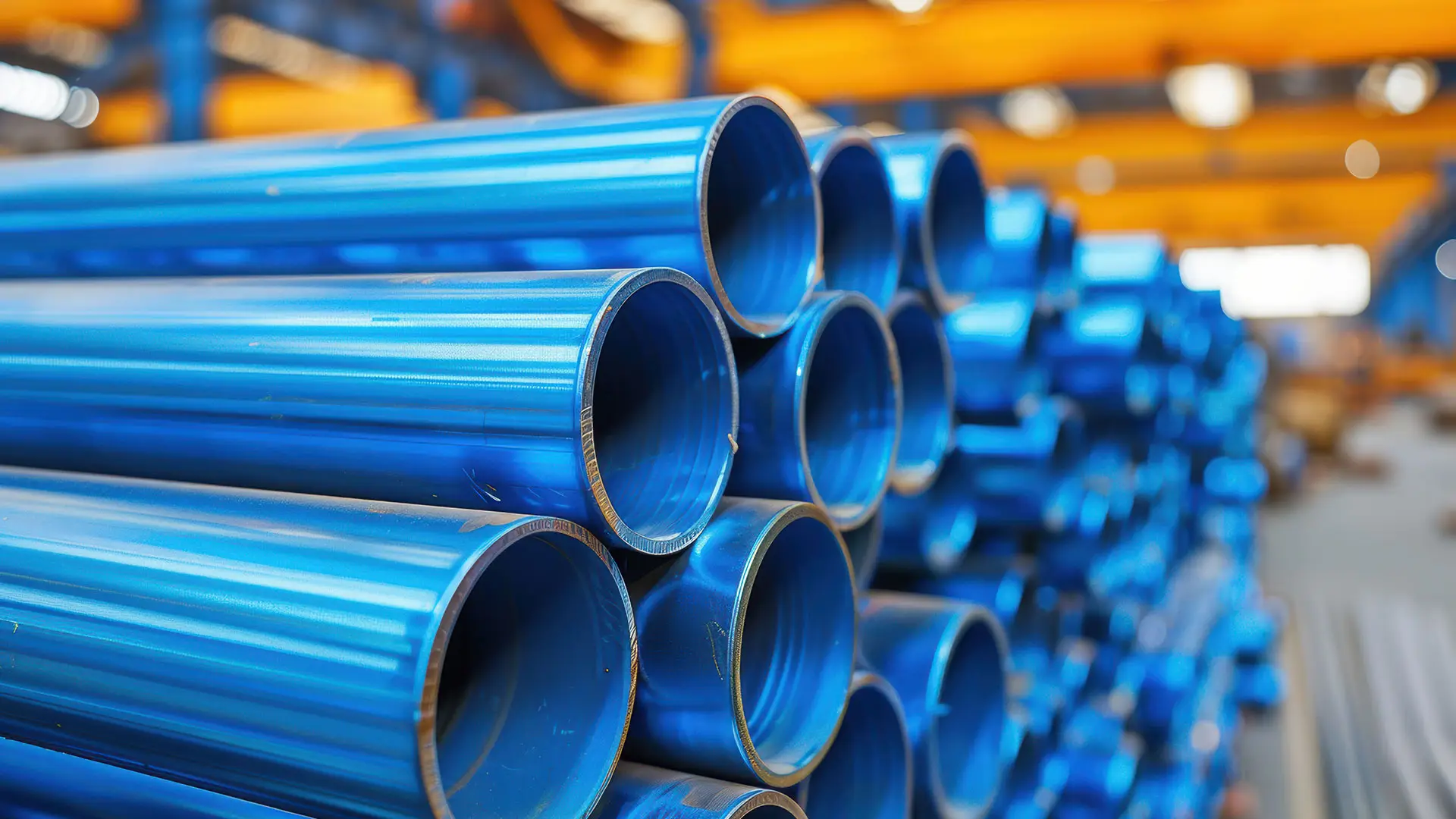
Future Innovations in Corrosion Prevention
As mining operations continue to expand, new technological advancements are emerging to enhance corrosion prevention in tailings pipelines. These innovations aim to increase durability, reduce maintenance costs, and improve efficiency. After the valuable fraction is extracted from the ore during processing, the remaining tailings must be safely stored in tailings storage facilities to prevent environmental contamination. By incorporating cutting-edge materials and smart monitoring solutions, the industry is moving toward more sustainable and long-lasting infrastructure.
Nanotechnology-Based Coatings
One of the most promising advancements in tailings pipeline design is the use of nanotechnology-based coatings. These coatings provide superior protection by forming ultra-thin barriers that resist chemical attack and moisture infiltration. Some nanocoatings even possess self-healing properties, meaning they can repair minor surface damage before it leads to more significant corrosion. This technology greatly extends pipeline lifespan and reduces maintenance frequency.
IoT-Enabled Smart Monitoring Systems
he integration of IoT (Internet of Things) technology in pipeline maintenance allows for real-time monitoring of pipeline conditions. Smart sensors installed along the pipeline can detect temperature fluctuations, pressure changes, and early signs of corrosion. This real-time data collection enables predictive maintenance, preventing unexpected failures and ensuring continuous operation. By optimizing pipeline design with IoT-based monitoring, mining companies can significantly improve efficiency and reduce operational risks.
Self-Healing Materials
Advanced materials are being developed to enhance pipeline resilience, with self-healing coatings being a breakthrough in corrosion prevention. These coatings contain microcapsules filled with protective agents that are released when the pipeline surface is compromised. This self-repair mechanism prevents corrosion from spreading and extends the durability of pipelines, including HDPE tailings pipes, which are already known for their resistance to chemical and environmental damage.
By integrating these cutting-edge technologies, mining operations can significantly enhance the reliability of their pipelines, ensuring that HDPE tailings pipe and other materials maintain long-term integrity in harsh environments.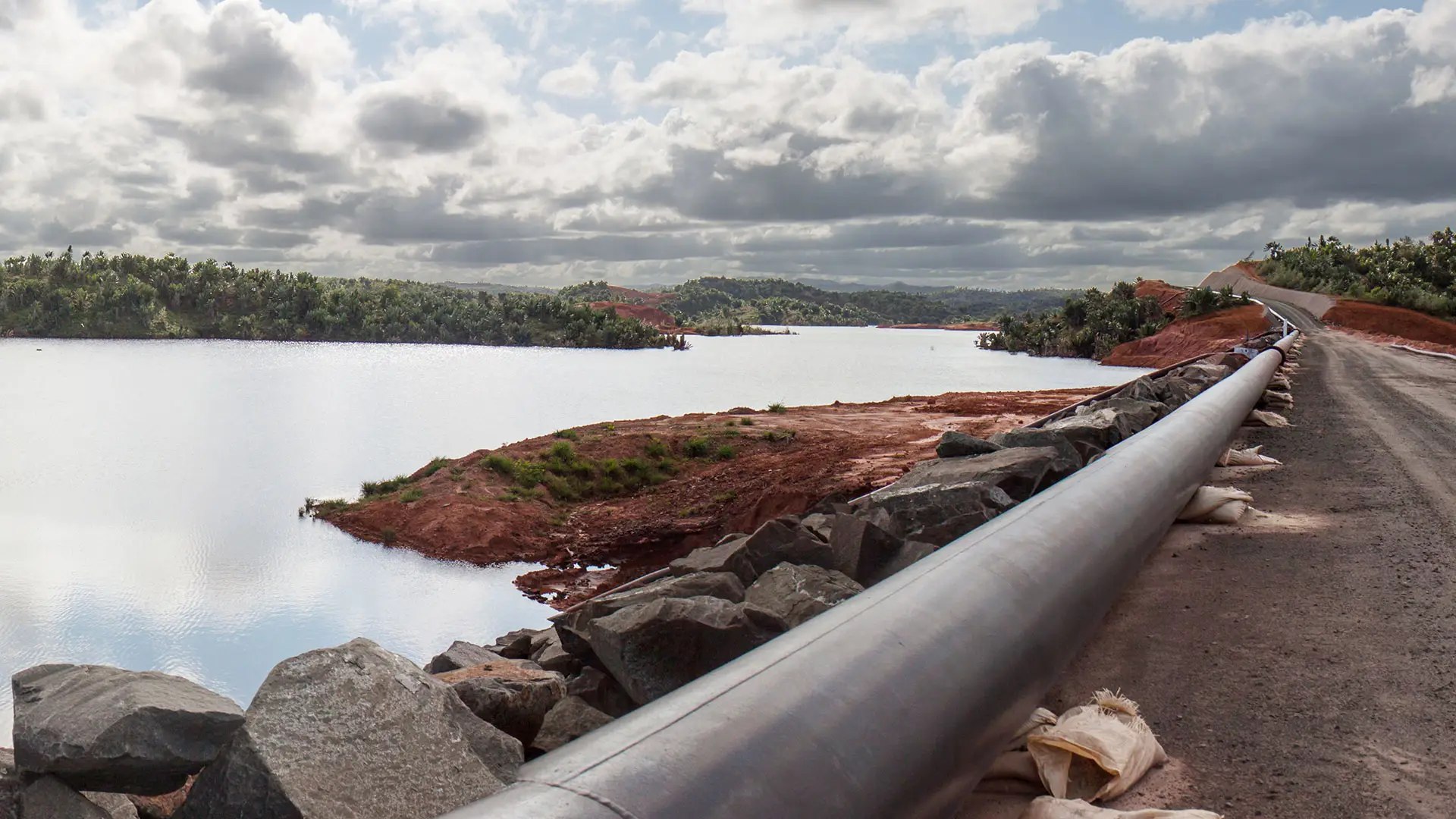
Conclusion
Corrosion is one of the biggest challenges facing mining operations, and taking a proactive approach to corrosion prevention is essential for ensuring the longevity and efficiency of a pipeline. By implementing a combination of material selection, protective coatings, cathodic protection, optimized tailings pipeline design, and routine maintenance, mining companies can significantly extend the lifespan of their infrastructure.
Recap of Key Corrosion Prevention Strategies
- Material Selection: Choosing the right materials for a pipeline, such as stainless steel, high-alloy steel, or HDPE tailings pipe, based on environmental conditions.
- Protective Coatings and Linings: Epoxy, polyurethane, rubber, or ceramic linings are applied to act as barriers against corrosive elements.
- Cathodic Protection: Utilizing sacrificial anodes or impressed current systems to prevent electrochemical corrosion.
- Proper Design and Installation: The tailings pipeline must be optimized to reduce stress points, turbulence, and erosion-related damage.
- Routine Monitoring and Maintenance: Conducting predictive inspections, smart monitoring, and regular cleaning to prevent corrosion before it leads to failures.
Long-Term Benefits of Proactive Corrosion Prevention
- Cost Savings: Extending the lifespan of a tailings pipeline reduces replacement and maintenance expenses.
- Environmental Compliance: Reducing the risk of leaks ensures adherence to environmental regulations and prevents contamination.
- Enhanced Operational Efficiency: A well-maintained pipeline ensures continuous operation, minimizing downtime and maximizing productivity.
Investing in corrosion prevention strategies, including the use of HDPE tailings pipe for increased durability, helps mining companies build safer, more reliable, and cost-effective pipeline systems, ensuring sustainable and efficient tailings transport.


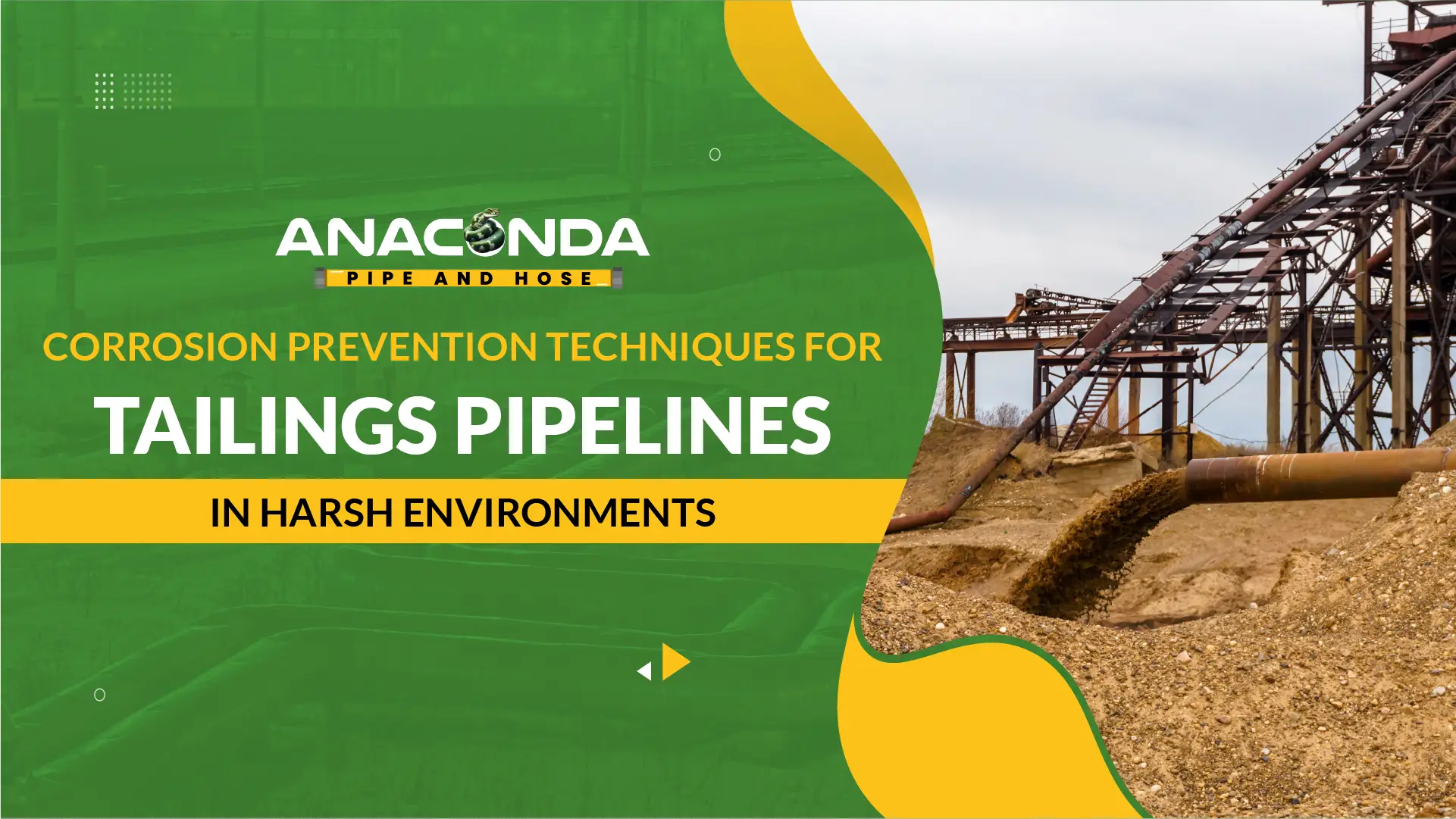
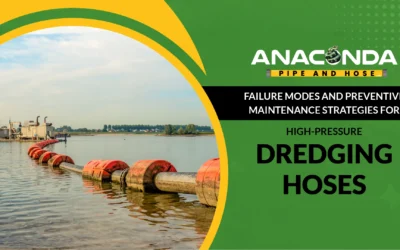
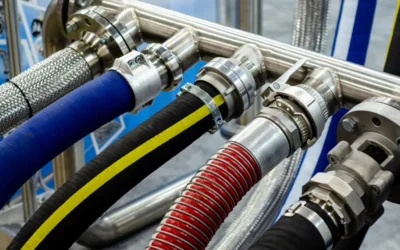
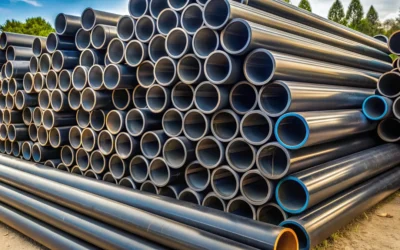
0 Comments